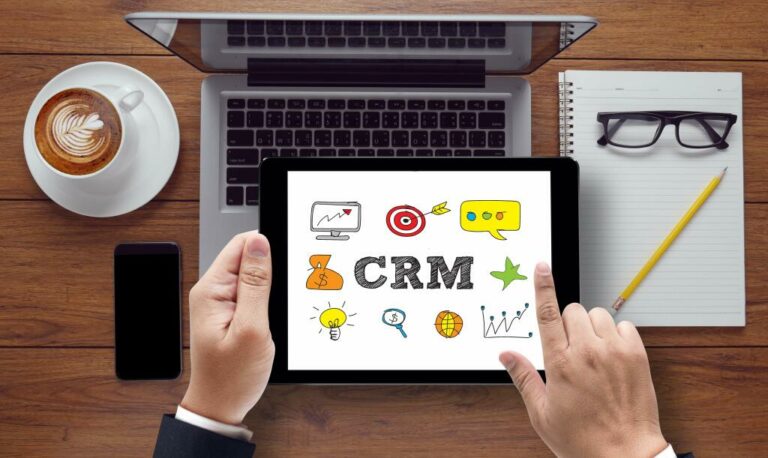Top 4 Reasons Why Your Company Needs A Hybrid Integration Platform
Содержание Hybrid Integration Platform Infosys Hybrid Integration Platform Offering Helps Meet The Most Significant Digital And Cloud Integration Challenges Get More Value From Your Data Similarities And Differences Between Hips & Ipaas Cloud Management Tools: Everything You Need To Know Forbes: How Leaders Are Managing The Complexity Of Cloud Using Microservices To Implement A Hybrid …
Continue lendo "Top 4 Reasons Why Your Company Needs A Hybrid Integration Platform"
Содержание
- Hybrid Integration Platform
- Infosys Hybrid Integration Platform Offering Helps Meet The Most Significant Digital And Cloud Integration Challenges
- Get More Value From Your Data
- Similarities And Differences Between Hips & Ipaas
- Cloud Management Tools: Everything You Need To Know
- Forbes: How Leaders Are Managing The Complexity Of Cloud
- Using Microservices To Implement A Hybrid Integration Platform Solution
- Being Resilient That’s Live Enterprise
Here are some of the main reasons why your business should use a hybrid platform. When talking about SAP, one may forget that we are now a cloud-first company. Many of our customers are using our cloud products, which are all based on cloud-software paradigms including modern and standard-based interfaces. A vendor neutral, flexible platform that allows enterprises to interoperate multiple “fit-for-purpose” integration solutions. It is highly imperative for enterprises to overcome this integration impedance to allow them to embrace “Cloud-first” and “Api-first” strategies to accelerate their digital transformation journey. To get the most out of an HIP, you must take into account all the security aspects involved in supporting these dynamic use cases.
There are many examples of distributed architectures, be it databases, datawarehouses or CRM systems. I’d like to receive Eckerson Group insights on the latest trends, technologies, and techniques in data and analytics. Because of this, HIPs are the preferred option for integrating legacy infrastructure. They can be used to make sense of old, unsorted data, which is becoming increasingly important as companies move toward more insight-driven models. IPaaS handles the architecture and infrastructure required for successful integration, leaving you to focus on building business logic.
These “building blocks” might include iPaaS alongside on-premises platforms such as B2B Gateway software or ESBs and ETL tools. They may also include API management platforms, IoT platforms, and managed file transfers. Openlegacy’s B2B solution makes it easier for the integration specialist to parse metadata from the on-premise systems and use templates to generate standard Java code. The integration specialists only need to know Java, a common language for cloud development. OpenLegacy is in the Hybrid Integration Platform product category which connects cloud-based and on-premise applications.
Hybrid Integration Platform
Rounding out the top three Leaders is SAP, whose SAP Cloud Platform Integration Suite provides a full range of integration capabilities and RPA services. Thanks to a combination of a large installed base of business applications and its impressive history in integration software, SAP currently features one of the most comprehensive EiPaaS offerings available. Application leaders are under pressure to reshape their integration platform strategy in order to tackle the pervasive integration challenges of Digital Transformation. In this article, we are going to help you understand what is a hybrid integration platform and the top reasons why your company needs it. However, a lot of customers are still using older on-premises SAP products.
Enabling a hybrid integration platform helps meet all your digital and cloud integrationchallenges. A hybrid integration platform enables seamless connectivity, fast data sharing and interoperability between enterprise cloud, on-premise and SaaS applications. Because it connects diverse systems, services and data stores, a hybrid integration platform can be a game changer for navigating modern integration challenges. The hybrid integration platform can easily keep pace with the market and industry changes. This means that businesses can easily adapt to new rules, processes and emerging technologies. Infosys hybrid integration platform offering helps meet the most significant digital and cloud integration challenges.
Infosys Hybrid Integration Platform Offering Helps Meet The Most Significant Digital And Cloud Integration Challenges
What is really important when I talk to my customers, is the notion of “strategic hybrid integration platform”, designed for any requirement a customer may have now, or in the future. The SAP Cloud Platform Integration Suite is an umbrella of independent services (think of them as micro-services) which provide synergies when used together. If you already have an application for integration, then the expertise of a hybrid integration provider may help you modernize it and prolong its lifespan. Many organizations still use on-premises, traditional data applications. If they want to integrate them with modern, cloud-based applications, then a HIP can help them do that. The main distinction between an iPaaS and a hybrid integration platform is the type of applications that can be connected.
Boomi, a wholly owned subsidiary of Dell Technologies, continues to hold a commanding spot not far behind thanks to its continued evolution of managed and professional services as well as its strategic acquisitions. Allows connectivity to different endpoints that are both on-premises and cloud-based. Multiple message or data delivery styles such as batch, API-based, event-based, or message and data validation.

The current IT landscape of a lot of companies can be simply described by the word “hybrid,” meaning that business processes can or are managed by the aggregation of mobile, cloud and local applications. Diverse integration tools can make all of the work as one coherent system, providing seamless data sharing between numerous components, interoperability and a lot of flexibility. That is why the current best option for enterprises is the hybrid integration platforms. An HIP enables users to develop, secure and govern integration flows connecting diverse applications, systems, services and data stores. It also enables rapid API creation, composition and lifecycle management to meet the requirements of a range of integration use cases. IT leaders are looking to invest in modernizing their integration infrastructure to keep up with the demand for new integrations, allowing enterprises to respond faster to evolving digital business requirements.
A business can use iPaaS to integrate data between public and private clouds as well as on-premises data. The tools used to achieve this include pre-built connectors, business rules, and maps. Together, they allow integration flows to function between locations using applications.
Get More Value From Your Data
These can help you modernize applications, integrate with social platforms, and manage business data more effectively. One of Boomi’s biggest strengths is its ability to closely follow and understand market trends, building up a rich platform that provides appeal for both midsize and large organizations. Its ability to provide a unified user experience as well as its market traction ensure that customers continue to come back again and again. With an ambitious roadmap of both business and technology goals, Boomi’s lead will only continue to grow.

The adoption of an HIP will reduce the friction you frequently find when connecting any kind of IT assets — whether they’re legacy or not. A pure low-code, cloud-native and secure HIP will release development teams to focus on more important matters that help the business win. In the past, integration was much more of an ad-hoc issue rather than a company-wide matter. We had integration broker approaches and enterprise service buses — modern monolithic middleware — that replaced ad-hoc activities and added governance. But these were a single point of failure by nature, which limited their ability to scale. This text provides comparison and contrast to different approaches and tools available for contemporary data mining.
Similarities And Differences Between Hips & Ipaas
This leads to a complex, heterogeneous integration landscape comprising of multiple cloud and on-premise systems further fueled by SaaS & PaaS adoptions. In this day and age, an HIP is simply better suited to solve the digital transformation challenges that organizations are facing. The API gateway is the main security gatekeeper that connects to internal assets and provides a common standard for customers and partners to access data using APIs.
Find out how leading CIOs are keeping their environments, vendor relationships, and management practices lean and efficient. Gravity is a team of product managers, data engineers and data analysts with experience in top 25 machine learning companies. Our project is the construction of a robust, self-healing data replication platform. This focuses on the best integration with DBT, granular notification systems, and the ability to harness data effectively.
- I’d like to receive Eckerson Group insights on the latest trends, technologies, and techniques in data and analytics.
- We offer free historical loading, so choose as much as you need with no limits.
- But on several occasions, I had to face customers who asked me to answer to competition’s remarks about our integration products.
- In addition, the adoption of technologies such as Kubernetes will allow these platforms to scale on demand while achieving high levels of resilience.
- The HIP consists of a range of technological “building blocks” which can come from a range of sources but are ultimately managed as one integrated whole.
- Although many top vendors remained consistent in the Leader category of this Magic Quadrant, there were some shifts in their relevant positions as certain providers aimed to level the playing field.
Hereunder I have captured the 2 steps of configuring an integration flow. There are no „complicated_difficult_to_read_properties“ file to configure somewhere, no variables to set in another file, no projected number of executions to define anywhere…. After that first round, I refined my search and found 226 integration packages that can be used, free of charge, within the SAP Cloud Platform Integration service . Note that the following is expressing my own opinion based on my experience and knowledge.
Cloud Management Tools: Everything You Need To Know
Ovum’s latest report explores the factors driving hybrid integration platform adoption. With HIP technology, enterprises can expand the number of products and services they offer. Is it possible because they can simply integrate any software and device with any other system?
Forbes: How Leaders Are Managing The Complexity Of Cloud
This leaves you free to edit, save, test, and repeat after you’ve set up the integration base to work on. It is also relatively straightforward to deploy since live development is possible without having to continually deploy during changes. Although they have these two functions in common, differences exist between the two technologies.
An iPaaS can be used between multiple cloud-to-cloud applications; however, a HIP can connect applications that are both on-premises and based on the cloud. You may also see organizations extend their integration platforms using infrastructure inspired by HIP. They do this by adding cloud-based “building blocks” to their on-premises platforms. Customers need a holistic and future-proof integration approach, based on flexible and easy-to-use integration building blocks. When choosing between iPaaS providers, you may wish to look for one that offers custom development kits.
These products, like so many others, have been built over the years and have been optimised by customers to adapt to their requirements. Older SAP ERP systems provide multiple ways of accessing information und functions. IDOCS for instance can be used for exchanging What Is the Hybrid Integration Platform information across SAP-Systems. But they can also be sent and received directly over HTTP in XML format. Also, an SAP system can very easily be accessed over REST APIs, be it through the Netweaver Gateway Hub or natively in the case of SAP S/4 ERP.
This Gartner report will help application leaders plan their hybrid integration strategy, taking into account both well-established and emerging technologies. A HIP is a new round of development, compared to monolithic management structures. It integrated outer and inner services into one environment and provides a secure gateway to transfer data, creates a competitive advantage and can make way for new innovations. So overall, the SAP Cloud Platform Integration Service can be used as a central hybrid integration platform, accommodating both SAP and non-SAP integration scenarios. Using this option, integration experts handle your integration processes for you.
HIP refers to integration and governance capabilities that can be applied to both on-premises and cloud-based data. The HIP consists of a range of technological “building blocks” which can come from a range of sources but are ultimately managed as one integrated whole. Cloud complexity can make it hard to realize the full benefits of digital transformation.
Advanced scheduling, for example, for whitelist hours, is also available. Because Gravity is a team of engineers, we have focused on developing a platform that works consistently, speedily, and straightforwardly. When using a HIP, you have the option to deploy from the cloud, running most of your ecosystem integration from there. A Hybrid Integration Platform, also called HIP, allows your IT to fast-track innovation, enhance efficiency and lower the risk factors in accomplishing integration.
Sometimes these remarks were simply wrong, sometimes illogical statements. A common enterprise wide platform that truly integrates “everything to everything” thereby insulating enterprise IT from digital pitfalls. The HIP offering can reduce integration development cost by over 50%, and reduce cycle time for integration delivery by 60%.
BMC works with 86% of the Forbes Global 50 and customers and partners around the world to create their future. The Enterprise Integration Platform as a Service Magic Quadrant continues to include a wide range of vendors, with almost 20 different contenders this year. Providers of enterprise integration platform as a service continue to broaden their offerings, covering increasing ranges of integration scenarios for the modern enterprise.
If the functions we provide are not sufficient, you can still program your own. But my take is that 80% can be done using predefined functions anyway, hence reducing effort and simplifying integration projects. This feature really helps since it avoids integration developers having to dive into the operating system to setup, manage https://globalcloudteam.com/ and check certificates in a complicated manner. Everything is available visually, through pre-defined process steps based on typical EAI patterns, providing data massage and orchestration features. This approach really make things simple for the integration developer, and is a step towards empowering the “citizen integrator“.
This can be both the integration of apps within an organization and the outside connection with vendors and partners. A HIP can configure, manage and regulate the data that is shared between employees, customers and partners, which can improve productivity, improve communication and increase the level of satisfaction. One thing that HIPs and iPaaS have in common is that they are both extremely popular and they’re both used by enterprises to make integration easier and more effective. However, although there are many iPaaS vendors on the market, very few of them offer actually hybrid integration platforms. Hybrid integration platforms are another response to the pressure that application leaders in charge of data integration face.
Categoria: Software development



